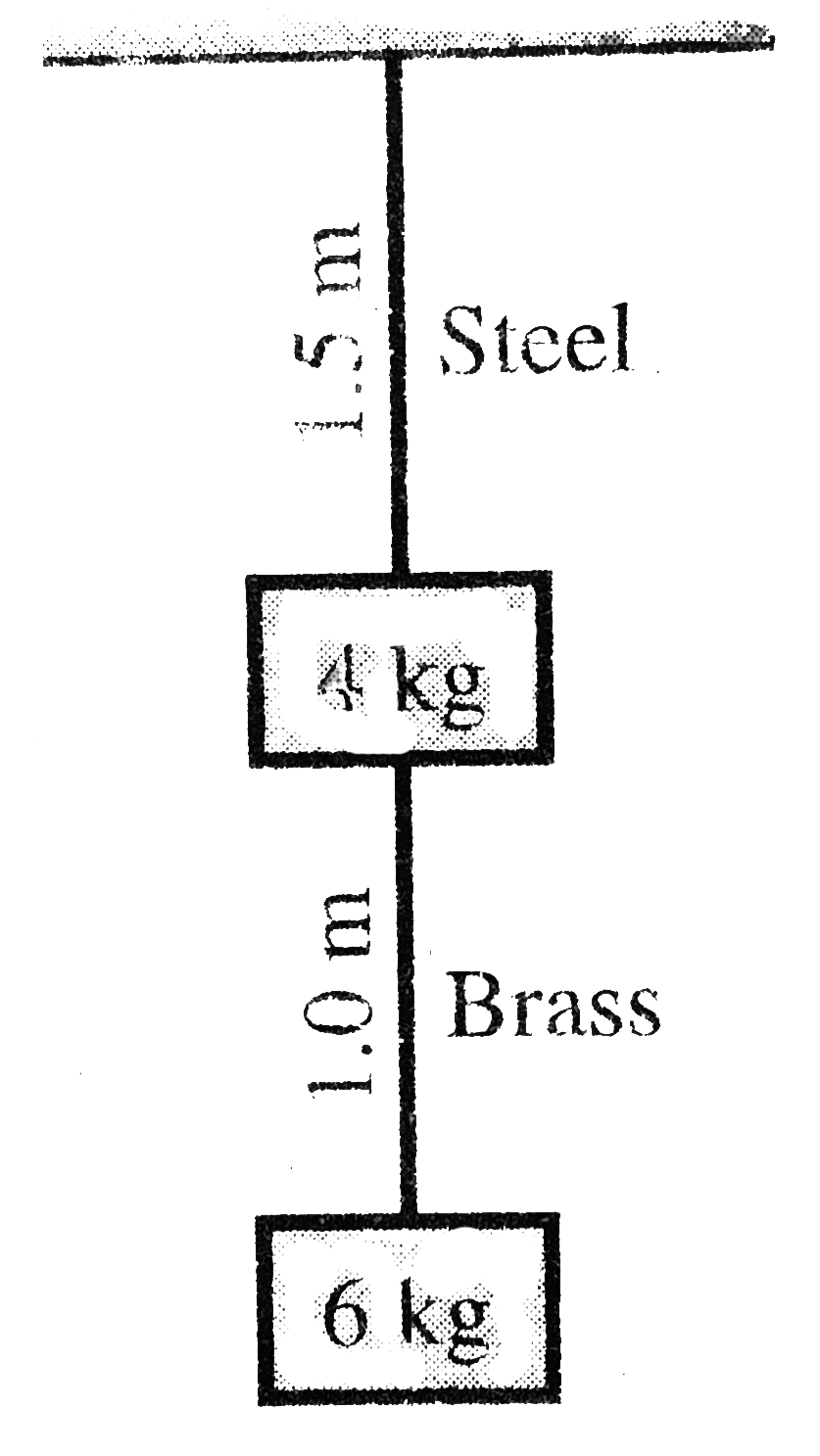How much should the temperature of a brass rod be increased so as to increse its length by 1%? Given α for brass is 0.00002.∘C−1.
To determine how much the temperature of a brass rod should be increased to achieve a 1% increase in its length, we can use the formula for linear expansion. The formula is given by:
ΔL=L⋅α⋅ΔT
Where:
- ΔL = change in length
- L = original length
- α = coefficient of linear expansion
- ΔT = change in temperature
1. Identify the given values:
- Coefficient of linear expansion for brass, α=0.00002∘C−1
- The desired change in length is 1% of the original length, which can be expressed as:
ΔL=0.01L
2. Substitute the values into the linear expansion formula:
ΔL=L⋅α⋅ΔT
Substituting ΔL with 0.01L:
0.01L=L⋅0.00002⋅ΔT
3. Simplify the equation:
- Since L appears on both sides, we can cancel it out (assuming L≠0):
0.01=0.00002⋅ΔT
4. Solve for ΔT:
ΔT=0.010.00002
ΔT=500∘C
Conclusion:
The temperature of the brass rod should be increased by 500°C to achieve a 1% increase in its length.
- ΔL = change in length
- L = original length
- α = coefficient of linear expansion
- ΔT = change in temperature
- Coefficient of linear expansion for brass, α=0.00002∘C−1
- The desired change in length is 1% of the original length, which can be expressed as:
ΔL=0.01L
ΔL=L⋅α⋅ΔT
Substituting ΔL with 0.01L:
0.01L=L⋅0.00002⋅ΔT
- Since L appears on both sides, we can cancel it out (assuming L≠0):
0.01=0.00002⋅ΔT
ΔT=0.010.00002
ΔT=500∘C
The temperature of the brass rod should be increased by 500°C to achieve a 1% increase in its length.
Topper's Solved these Questions
- PROPERTIES OF BULK MATTERBook:PRADEEPChapter:PROPERTIES OF BULK MATTERExercise:Conceptual Problems
Explore 103 Videos
- PROPERTIES OF BULK MATTERBook:PRADEEPChapter:PROPERTIES OF BULK MATTERExercise:Advanced problems for competitions
Explore 21 Videos
- PROPERTIES OF BULK MATTERBook:PRADEEPChapter:PROPERTIES OF BULK MATTERExercise:Long Answer questions
Explore 33 Videos
- PHYSICAL WORLD AND MEASUREMENTBook:PRADEEPChapter:PHYSICAL WORLD AND MEASUREMENTExercise:Competiton Focus Jee Medical Entrance
Explore 18 Videos
- RAY OPTICSBook:PRADEEPChapter:RAY OPTICSExercise:Problem For Practice(a)
Explore 25 Videos
Similar Questions
Knowledge Check
How much should the temperature of a brass rod be increased so as to increase its length 3% (α for brass is 2×10−5/∘C−1)?
A1500∘CB150∘CC2000∘CD2500∘CAn ideal engine whose low-temperature reservoir is at 27∘C has an efficiency of 40%. By how much should the temperature of the high-temperature reservoir be increased so as to increase the efficiency to 50% ?
A100∘CB600∘CC375KD600KTo increase the length of brass rod by 2% its temperature should increase by (α=0.00002∘C−1)
A800∘CB900∘CC1000∘CD1100∘C
If temperature of an ideal gas in a closed vessel is increased by 40c ,pressure increases by "1%" .Initial temperature of gas is
View SolutionThe volume of thin brass vessel and the volume of a solid cube are both equal to 1 litre. What will be the change in the volumes of the vessel and the cube upon being heated to 25∘C ? (Given α for brass = 1.9×10−5∘C−1)
View SolutionTwo wires of diameter 0.25cm, one made of steel and other made of brass, are loaded as shown in the figure. The unloaded length of the steel wire is 1.5m and that of brass is 1.0m. Young's modulus of steel is 2.0×1011Pa and that of brass is 1.0×1011 Pa. Compute the ratio of elongations of steel and brass wires. △lsteel△lbrass=?

View SolutionA heavy brass bar has projections at its ends as shown in the figure. Two find steel wires, fastened between the projections, are just taut (zero tension) when the whole systeam is at 00C. What is the tensile stress in the steel wires when the temperature of the systeam is raised to 3000C?
Given that
αbrass=20×10−6∘C−1
αsteel=12×10−6∘C−1Ysteel=2×1011Nm−2
_E01_077_Q01.png)
View SolutionA clock which keeps correct time at 25∘C , has a pendulum made of brass. The coefficient of linear expansion for brass is 0.000019.∘C−1 . How many seconds a day will it gain if the ambient temperature falls to 0.∘C ?
View Solution
